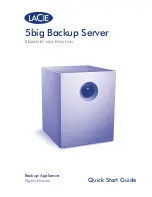
9
Function .Overview
Controller
Connect multiple modules to the controller and control
charge/discharge current.
Controlling .charge/discharge .current
Control charge/discharge by communicating with a module.
Charge will stop when the charge signal output from a
module becomes low.
Charge will stop when “Over Voltage” signal output from a
module becomes low.
Discharge will stop when the discharge signal output from a
module becomes low.
LCD .Display .Panel
Information from a module (charge/discharge status,
voltage/current, capacity, temperature, etc.) is
communicated to the controller, and appears on the display
panel on the front of the controller.
Communication .with .Host
Information on a module and the controller can be
communicated to a host via the RS232C or CAN
communication terminal.
Protection .against .overcurrent
Provides fuse protection against overcurrent. An output
control switch is also included.
Auto-power .on .and .auto-shut .down .circuit
Shuts down the system automatically after a module is
completely discharged. When an external charging voltage is
applied, the system will be powered on automatically.
Energy Storage Module
Charge and discharge control
Charge/discharge are controlled by 3 signal lines, charge,
discharge, and overvoltage.
In .the .following .cases, .the .charge .signal .becomes .low
ˎ
ˎ
Maximum cell voltage exceeds specified voltage range
ˎ
ˎ
Temperature exceeds specified range while charging
ˎ
ˎ
Overcurrent flows while charging
ˎ
ˎ
Charging completes
In .the .following .cases, .the .discharge .signal .becomes .low
ˎ
ˎ
Overdischarge
ˎ
ˎ
Temperature exceeds specified range while discharging
ˎ
ˎ
Overcurrent flows while discharging
In .the .following .cases, .the .over .voltage .signal .becomes .
low
ˎ
ˎ
Overvoltage
ˎ
ˎ
Temperature exceeds specified range while charging
ˎ
ˎ
Overcurrent flows while charging










































